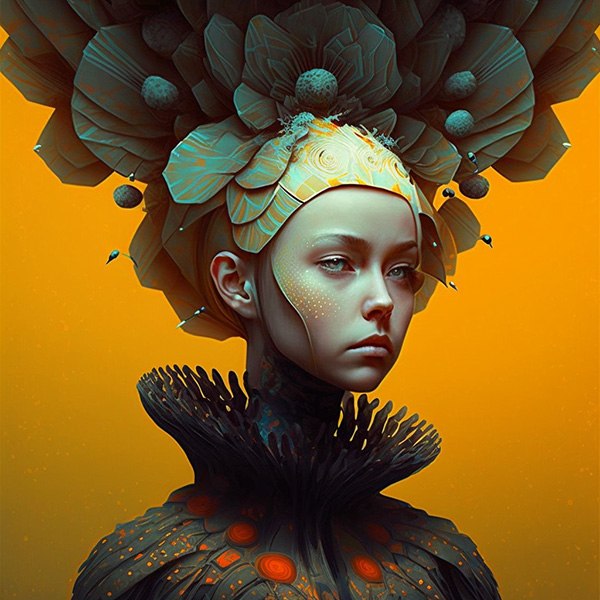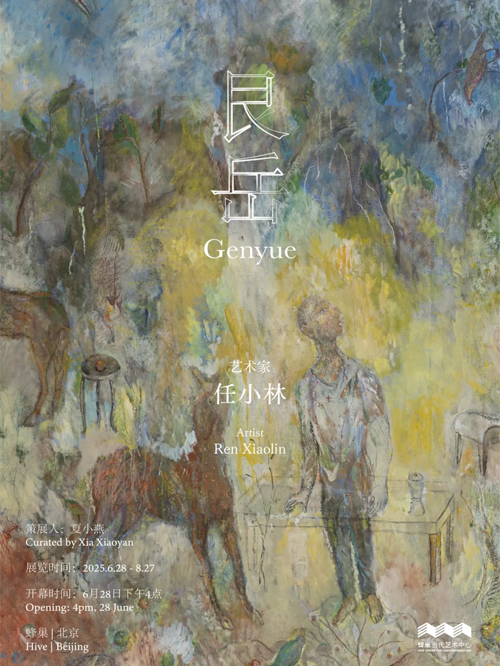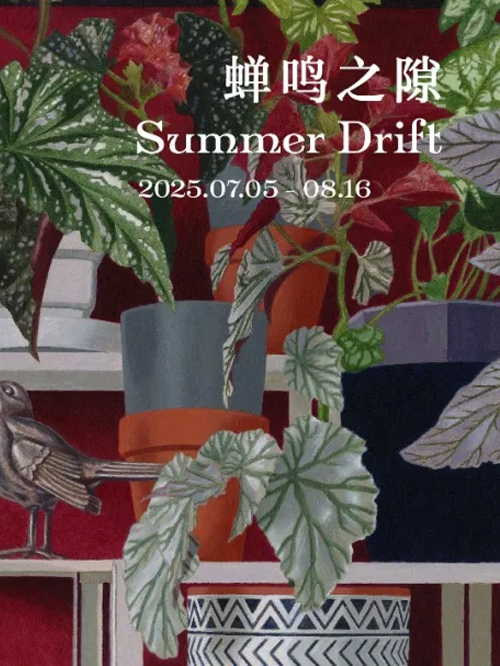“幻月之灵”是多元的、萌芽的、复合的存在。本次展览在满月之时徐徐展开,汇集了六位女性艺术家创作的绘画、雕塑和纸上作品,引出对女性特质、身体以及人类与自然关系的思考。
月亮在希腊神话中被描绘成夜之女神塞勒涅:夜幕降临,她驾着由两匹神⻢拉动的⻋在夜空中⻜驰,通体闪烁着银晖色的光芒。分析心理学家卡尔·荣格曾提出,神话中的人物往往反映了人类生活的真谛;他认为故事中的原型是“人类集体潜意识的表达”,并将女性原型与三相女神对照:其中少女、母亲和老妪的关系与月球公转时的月相变化、潮汐涨落相吻合。除了代表时间规律,月亮周而复始的运行周期还有永恒、启蒙和大自然的黑暗面等象征意义。
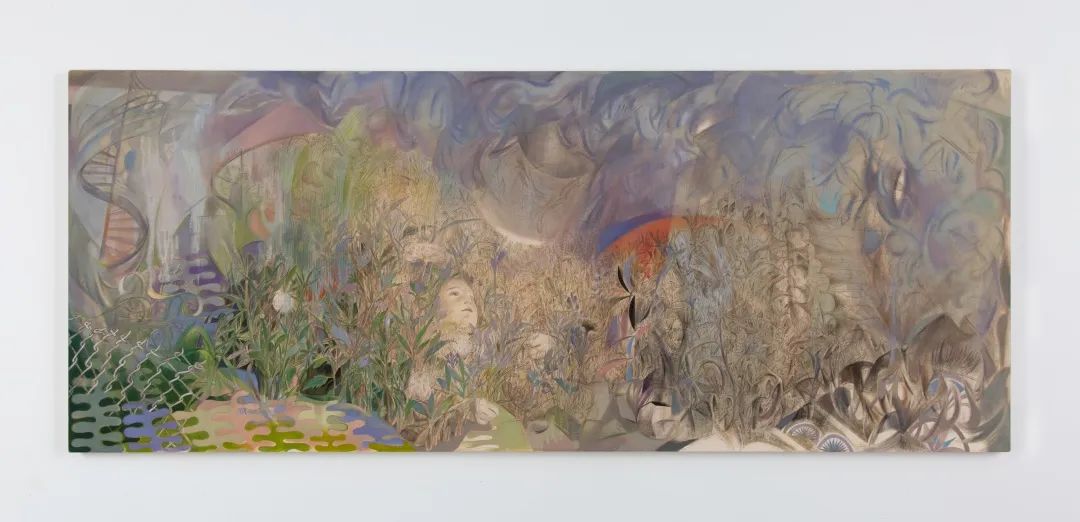
裴彦清 Yanqing Pei,憩息地 Mood Board #2,2022,
布面油画 Oil on canvas,66 x 162cm.
从中国唐代诗人李白笔下的《静夜思》到⻄班牙著名画家雷梅迪欧斯·巴罗的作品《造星者》,艺术家、文人和天文学家都为氤氲朦胧的月色神魂颠倒。在超现实主义思想中,月亮常常指代幻想和潜意识,用于扭曲线性时间或现实规律。超现实主义的艺术家们纷纷将目光投向想象的世界,表达人类内心深处的情感和思考,憧憬内在的解放;当感知被不易察觉的微妙细节所刺动,我们心中的野性也随之蔓延。
宇宙的本质是什么?人类的体内是否暗藏着神性的火花?当我们研究自然与人类感知的相对关系时,不妨从哲学传统中汲取灵感。


陈孟涵 Menghan Chen,
双连画:虎与豹的肖像研习 Portrait Study of Lepoard,2022,
卷轴:蓝晒于宣纸 Hand scroll, cyanotype on rice paper,170 x 48cm/幅
在⻄方哲学中,本体论用于描述事物的本质及其相对应的概念,如对“存有”、“变化”和“现实”等观点的研究。亚里士多德认为,灵魂是身体的形式和本质;人体每一部分都不能离开某种知觉,亦即不能离开灵魂,灵魂是本质的主体。不单单是人类,一切动植物生命体都有灵魂。东方玄学中,道家思想主张万物自生而独化,每一事物都有自己的本体,世间变化都蕴含着不变的规律,即道法。“天人合一”,人可以被看作是宇宙的缩影;人类的身体再现宇宙的法则,人类的切身经验映证宇宙的真理。

菊汁 Shiwen Wang, 入梦 AI, 2022,
布面油画 Oil on canvas,88 x 80cm
自工业化以来,人与自然的关系发生了翻天覆地的变化。生态灾难和科学危机的不断到来,促使我们寻找与自然共存的新方向,以避免人类社会的悲剧终局。学者保罗·克鲁岑在他2000年发表的一篇文章中阐述了“人类世”的概念,作为地缘政治和新时代的转折点,人们就这一概念开展了对另一个未来或新纪元的想象。随着人类成为地球史新阶段的驱动力,我们是否处于世界末日的边缘?
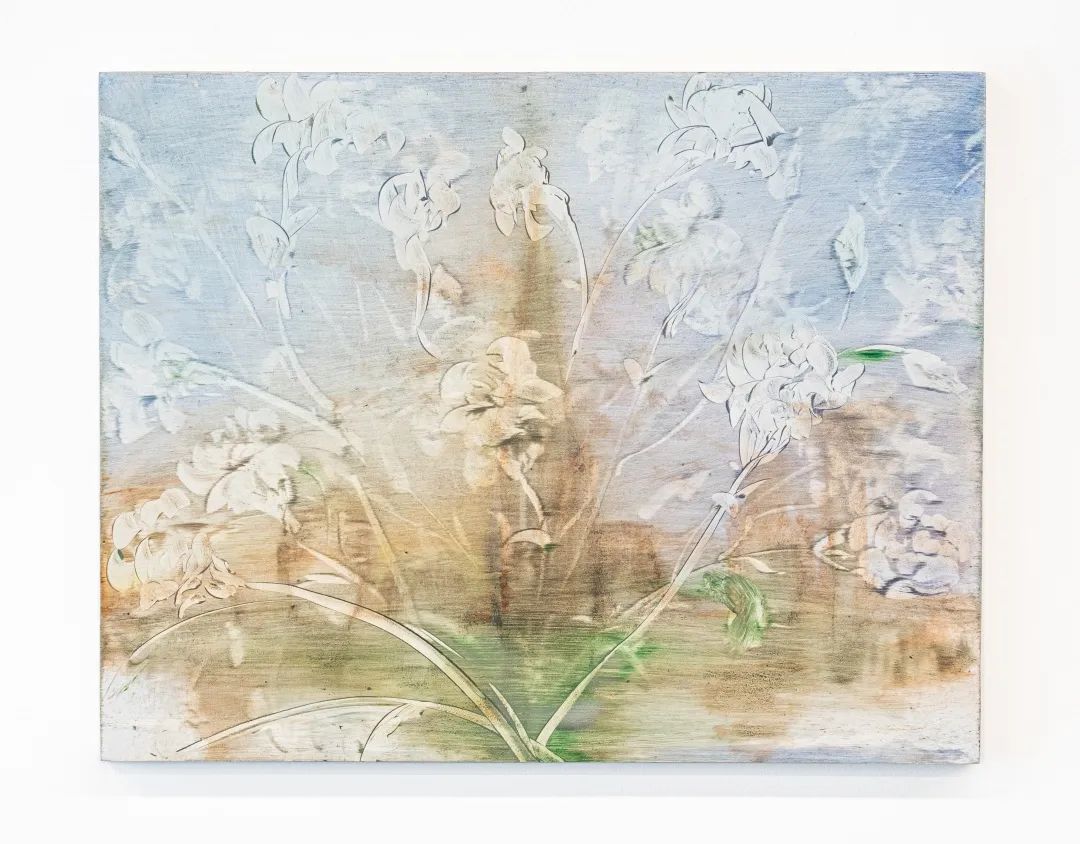
郭雅格 Yage Guo,
水上康乃馨 Carnation and The City On The Water, 2022,
木板油画 Oil on wood panel, 28 x 36cm
本次展览中,艺术家运用东⻄方审美实践的交融,描绘身体存有变形的潜能,人类精神无意识的碎片,又或是来自遥远星系的奇幻生物。“幻月之灵”像是一个万花筒般的时刻,呈现了这个世界荒诞的、感性的、梦幻的多元本质。

梁娅杰 Yajie Liang,夏日晚风 Summer Night, 2023,
布面丙烯 Acrylic on canvas, 180 x 90cm
展厅前方的阅读空间提供了艺术家在生活和创作过程中受启发的书籍,主要包含小说、诗歌和散文等类别的文学作品。此外,以巴黎超现实主义运动的“优美尸骸”文字接龙游戏为灵感来源,艺术家和策展人合作书写了题为《去往月球的路》的视觉诗歌;诗句由一个想法或个人经历出发,捕捉我们日常生活中稍纵即逝、如碎片般零落的思绪,可从任意方向阅读,邀请读者一起,踏上一场充满意外的旅程。
Moonlit Beings are porous, emerging and hybridised. Opening on the day of the full moon, the exhibition brings together paintings, sculptures, and works on paper by six women and non-binary artists who reimagine femininity, the body, and our relationship to nature.
In Greek Mythology, the moon is portrayed as Selene, the goddess of night, shining silver light down from a celestial chariot while being carried by two snow-white horses. Psychoanalyst Carl Jung refers to the Triple Goddess as a female archetype, where the Maiden, Mother, and Crone aspects align with the moon’s phases as it orbits Earth. Archetypes, in his words, can be seen as "expressions of the collective unconscious", since mythological figures often reflect truths about human experience. Universally representing the rhythm of time, the different phases of the moon in a lunar cycle symbolise eternity, enlightenment and the dark side of nature.

王子平 Ziping Wang,
月灰在你的皮肤上留下痕迹 Moon ash left traces on your skin,2022,
布面油画 Oil on canvas,80 x 60cm
From Li Bai’s poem Thoughts on a Tranquil Night (726) to Remedios Varo's painting Celestial Pablum (1958), artists, literati and astronomers alike seek fascination in the moon's enchanting psyche. In surrealist thought, the moon is often a metaphor for fantasy and the unconscious, distorting linear time or everyday reality. Turning its inward eye toward the world of the imagination to engage with human emotions, surrealism celebrates the liberation of the self; where one sees things beyond the immediately perceptible, and the wildness within ourselves grows.
What is the essence of the universe? Is there a spark of the divine hidden within us? As we examine the relation of nature to human perception, we can look at how these questions are addressed in philosophical traditions.
In Western philosophy, ontology is the study of beings and related concepts such as existence, becoming, and reality. For Aristotle, the soul’s essence is defined by its relationship to an organic structure. This is to say that not only humans, but beasts and plants too have souls. Similarly, Taoists see all things as periodical mutations within an unchanging unity (the constant Dao), and the human being is a microcosm corresponding rigorously to the macrocosm. While the body reproduces the plan of the cosmos, human experiences reveal the structure of the cosmos.
Since industrialisation, the connection between humanity and nature has undergone a significant transformation. The constant arrival of ecological disasters and technological crises urges a new direction for society to avoid its demise. The Anthropocene epoch, first theorised by Paul Crutzen in his article (2000), becomes a turning point for the geo-political imagination of another future or beginning. As human beings become the driving force in this new phase of planetary history, are we on the brink of an apocalyptic moment?
Weaving Eastern and Western practices, artists in this exhibition depict the alchemical potential of the body, the detritus of the human unconscious, or sometimes fantastical creatures that arrived from a distant galaxy. Inherently absurd, often sensual, always dreamlike, Moonlit Beings presents a kaleidoscopic moment portraying the world’s plurality.
A reading space accompanies the exhibition. This final exhibition space offers reading materials that inform a range of artistic processes, from novels to literature. Collaboratively composed by both artists and curator, A Way to the Moon is a visual poem inspired by Exquisite Corpse, which traces its roots to the Parisian Surrealist movement. The title hints at a journey into the unconscious, the imaginaries, unravelling spaces in between, while the verses come from fluid and fragmented musings, intentional and unsettled textual processes attached to a concept or personal experiences.


温傑思
Jessica Wan
温傑思是一位独立策展人和作家,她将文化和政治作为一个开放议题,采用跨学科的方法创作多元化知识结构。她与艺术家和思想家合作,在非营利和商业空间去开拓发展他们的作品,包括博物馆、基金会、画廊、艺术博览会和文化节等。她的自主策展项目试图将空间转换成情景之中,以了解自身与广阔环境之间的相互联系。
温傑思目前是切尔西艺术学院的副讲师,也是出版物的撰稿人。


